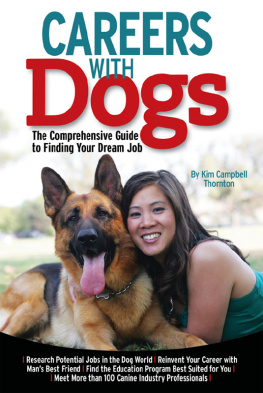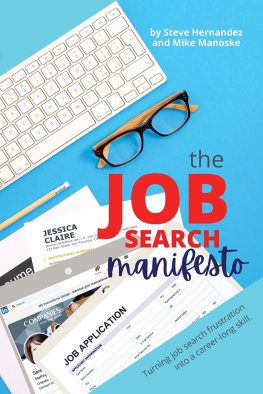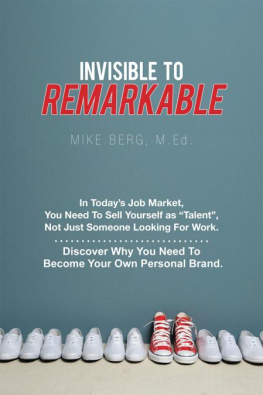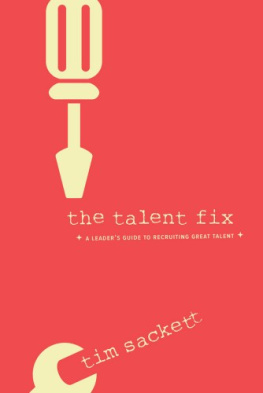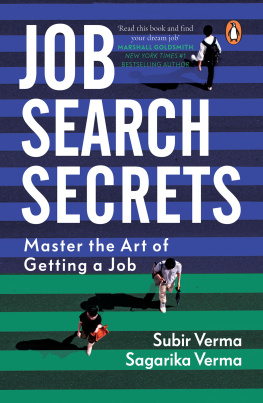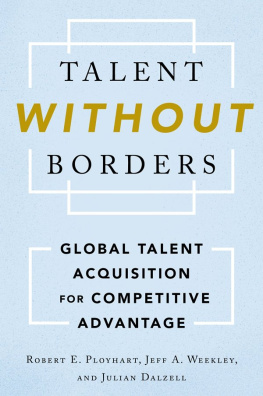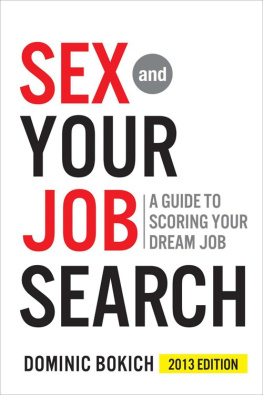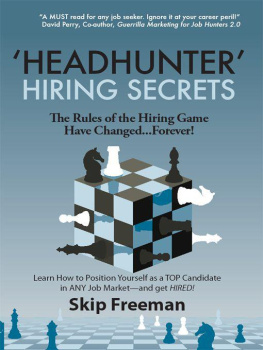All rights reserved. No part of this publication may be reproduced, stored in, or introduced into a retrieval system, or transmitted in any form or by any means (electronic, mechanical, recording, photocopying recording, or otherwise) without the prior written permission of the author, except in the case of brief quotations embodied in critical reviews and certain other noncommercial uses permitted by copyright law.
The book is sold subject to the condition that it shall not, by way of trade or otherwise, be lent, resold, hired out, or otherwise circulated without the publishers prior consent in any form of binding or cover other than that in which it is published and without a similar condition, including this condition being imposed on the subsequent purchase.
Edited by Sarah Lane.
Proofread by Katerina Nenkova.
Cover and book design by Euan Monaghan.
Introduction
Searching for a job is tough. You spend hours tailoring your resume and cover letter, applying to dozens of positions, and crossing your fingers that youll get at least one call back. And then, if youre lucky enough to land an interview, you have to go through the nerve-wracking process of meeting with a potential employer and trying to sell yourself as the best candidate for the job.
The book you are holding in your hands or reading on a digital screen is different from other books covering the job search process. It is based on decades of research: During my career I interviewed more than 10,000 candidates and helped find the new dream job for hundreds of them.
This guide is for anyone looking for a new jobnot just people new to the processregardless of whether they just finished university, have several years of experience, or are a seasoned employee.
Unlike other job search guides, which are step-by-step manuals promising that you will land a job within the next few days, this book will help you throughout the hiring process, including the interview and salary negotiations.
And this is perhaps the most important difference, this book is not a step-by-step manual that you need to follow to the letter, as most of the steps included in such manuals will never work for you or for your specific situation. There is no one-size-fits-all approach to landing a new job.
Rather than telling you what to do, I decided to share with you what is behind the curtain of the recruitment process and disclose all the things that recruiters and hiring managers are doing, things no one has told you about before.
No book in the world will guarantee you a job after you finish reading it, but after you read this job search guide and use the methods mentioned in it, your chances of landing a new job will increase.
Once youve found your new dream job, please share this book with your significant other, family, friends, colleagues, or anyone who is currently looking for a job. Give them an advantage over the other candidates.
If you have a few seconds to spare, I would appreciate any positive review on Amazon or on LinkedIn so more people can find out about my book. Many thanks for considering my request.
I hope you enjoy reading it!
Jan
1. Ways to Find a New Job
Youve been at your job for a while now and youre starting to feel stagnant. Its time for a change. But where do you even start? If youre like most people, your first stop will be the local job boards. Youll scan through the postings, looking for anything that catches your eye.
Many job seekers focus mainly on online resources when looking for a new job. Although online job boards can be a great way to find open positions, they are not the only option. There are many other job search resources that are often overlooked but can be just as effective.
For example, networking is a great way to learn about unadvertised jobs and make connections in your industry. Talking to friends, family, and acquaintances can also lead to job leads. On LinkedIn, you can connect with new people in your field and learn about opportunities that you might not have otherwise heard about.
Although checking company websites for job postings can be time-consuming, it is still a very effective way to find job openings. The good news is that many job aggregators, like Indeed.com, can help you with this process, as they scrape job postings from company websites.
By taking the time to explore all of the available job search resources, you will improve your chances of finding a position that is a good fit for you.
Job Search Resources
1. Talk to the people you know
One way to find a job is to let your family and friends know that you are looking. You can also post on Facebook and share with your network what you are looking for to see if anyone knows of any openings. Asking around like this could give you insider information about jobs that may not be posted anywhere or roles that are open primarily for internal candidates.
You never know where a new opportunity will arise. Sometimes a single post on LinkedIn, Facebook, or Twitter shared by your friends is enough to help you land your next job.
2. Get referred
Some of the best opportunities are not made public. This is especially true for well-known companies, which tend to receive a high number of referrals. As a result, the available positions are filled very quickly, without the company needing to employ a traditional recruiting process.
During your career, you will build a vast network of people. If you have some experience behind you, you can reach out to this network now. Your network might include ex-colleagues, customers, or LinkedIn influencers who are familiar with your industry. Contact them via LinkedIn message/inMail to ask about any job openings they may know of.
If you have a good relationship with someone who works at a company youre interested in, ask if they can share your resume with their leadership or recruitment team. This will help start a conversation about your past projects and could even lead to internal opportunities. If you have the skills and experience that they are looking for, they may even create a new opportunity specifically for you. The worst that can happen is they say no, so its worth asking.
Even if they dont have any job leads for you, they can still share information, advice, and encouragement during your journey.
3. Check the career pages of companies
If you have several favorite companies where you always wanted to work, the best step you can take is to check out their career websites. Youll not only see what career opportunities are currently available, but youll also learn more about each company, its products, its values, and its culture.
To find a career page, look for sections titled Careers or Jobs on a companys home page. Career pages may also be hidden under the About Us link.
If you cant find the career section on the company website, you can try a simple Google search for [Company Name] Jobs (example: Nike jobs) or [Company Name] Careers (example: Nike Careers). With this strategy you might also find some other job sites where a company and its competitors post job opportunities.
If you dont find any job opportunities on a companys career site, sign up to receive alerts about new job postings by joining the companys career network.
4. Cold call
What is a cold call? A cold call is contacting someone with whom youve had no prior contact. In the context of recruitment, it means reaching out to a company you would like to work for, even if there are no jobs currently available.
To reach out, either call or email the human resources department/recruiters to ask if they know of any current or upcoming vacancies. Recruiters dont always post job openings on public job boards or websites like LinkedIn.


